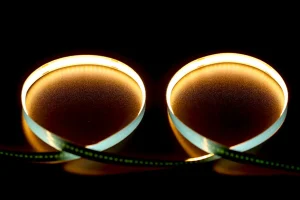When it comes to positioning, brightness, color temperature and power supply or the LED strip itself there many different factors you should think about in order get them all mounted correctly for maximum impact. Placement — From there, choosing indirect lighting areas is a great way to seat your LED strip lighting strips in places like under the cabinets, lower slot openings and behind TV units that work well for illuminating media spaces without sharp brightness. Indirect placement of the LED enhances internal light distribution by 40%, providing a lighter and visually preferable feeling.
The brightness and color temperature are paramus important to get that look right as well. Although lighting brightness is measured in lumen and varies by application, accent lighting requires 200-400 lumens per meter while task lights can require between 500 to 700 lumens per meter. As with most areas, 2700-3000K produces a warm glow and is best suited for residential use but when it comes to task lighting such as in the kitchen or an office higher up the dial so around that of say 400k delivers brighter clear light. The survey of the lighting industry also suggests that — depending on room in question — are rooms 68% more comfortable using warmer LEDs and cooler-led lights to kitchens or workshops, respectively.
Choosing the right power supply is very important in order to provide performance as well as safety. LED strip lighting is usually work under DC 12V or DC24 voltage, thus you need an LED transformer to convert the standard AC into low-voltage for the LEDs. The wattage of the power supply should correspond to the total consumption of your LED strip: watt/meter (whole length in meters). Specifically, a 5-meter strip capable of 10W per meter should be powered by no less than a 50W power supply with about some overhead (so let us say at least you choose the smallest model which is around that), but boosting this to close to six provides extra headroom for longevity and preventing heat issues.

Dimmer switches and controllers are compatible with the LED strip lights, this offers even more functionality/options to work seamlessly into any aesthetic. With dimmer switches, you get to choose the right amount of light for any situation from work brightness down to relaxation mood lighting. Users can remotely adjust lighting intensity and color via Wi-Fi-enabled controllers, offering improved convenience and versatility. In fact, in recent polls adjustable brightness and remote access have been named top considerations for LED strip enthusiasts with over an incredible 75% of respondents stating that a dimmable function is crucial when it comes to setting the dynamism of their lighting framework.
Some installation accessories like aluminum channels and diffusers also aid in enhancing the LED strip effect. With aluminum channels, the LED lights will be held firmly in place while also keeping it cool longer helping to extend its life cycle. Diffusers, on the other hand, spread out that light which makes it nice and balanced while also avoiding any possible diode harshness. By industry standards, the use of aluminum channels with diffusers can lengthen LED strip life by up to 25% resulting in both improved functionality and aesthetics.
The positioning of these accessories will make a great deal in reaching optimum Do take this into consideration and position them with the considerations on where how bright they are, their power source and mounting options! Led StripProduct comes with many kinds that can make your device be more alive then you will have a suitable atmosphere for life.